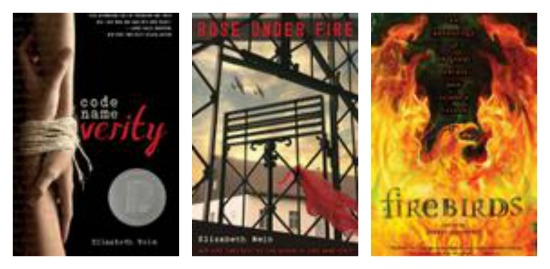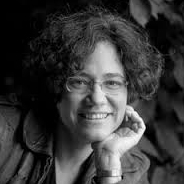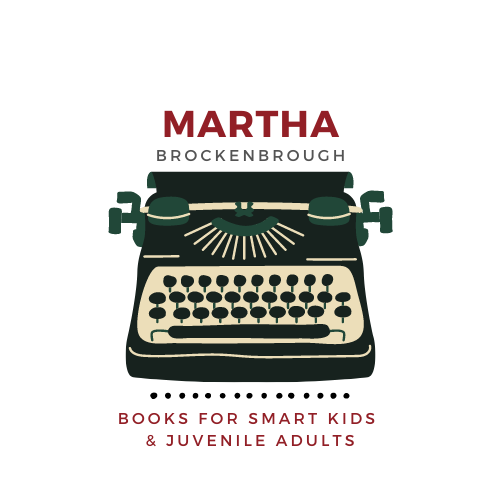 Elizabeth Wein is author of one of my all-time favorite novels, CODE NAME VERITY. Set in World War II, the book is riveting, heartbreaking, elegant, emotional, and surprising, all at once. Seriously: It blew my mind. If you haven't checked it out yet, please do (and then pick up ROSE UNDER FIRE, its stunning companion).
Elizabeth Wein is author of one of my all-time favorite novels, CODE NAME VERITY. Set in World War II, the book is riveting, heartbreaking, elegant, emotional, and surprising, all at once. Seriously: It blew my mind. If you haven't checked it out yet, please do (and then pick up ROSE UNDER FIRE, its stunning companion).
I can't wait to hear her keynote at the upcoming national SCBWI conference in New York. She's not only a master writer, she's also generous with her wisdom. So generous, in fact, that I am splitting my interview with her into two parts.
If you haven't yet signed up for the conference, don't delay. It's likely to sell out. And now, please enjoy what Elizabeth has to say about her books and her process for creating them.
You write historical fiction—how do you choose which era you'd like to write about, or more specifically, what made you leap forward in time to the 20th century?
 Elizabeth WeinI was pushed. My editor at the time asked me to write about something more mainstream than Ethiopia in the sixth century. After I got my own pilot’s license I’d been inspired to write several short stories about flying, but the one that was praised the most was set during World War II—it was about a girl who disguises herself as her dead brother so she can become a Royal Air Force pilot during the Battle of Britain. While I was doing the research for this story I’d uncovered information about the women of the Air Transport Auxiliary and the Special Operations Executive, and there was already an idea for a novel percolating in the back of my brain. (The short story is called “Something Worth Doing,” and it’s available in Firebirds Soaring, edited by Sharyn November, as well as in Egmont’s “enhanced ebook” version of Code Name Verity. Theo, the main character, makes a cameo appearance in Code Name Verity.)
Elizabeth WeinI was pushed. My editor at the time asked me to write about something more mainstream than Ethiopia in the sixth century. After I got my own pilot’s license I’d been inspired to write several short stories about flying, but the one that was praised the most was set during World War II—it was about a girl who disguises herself as her dead brother so she can become a Royal Air Force pilot during the Battle of Britain. While I was doing the research for this story I’d uncovered information about the women of the Air Transport Auxiliary and the Special Operations Executive, and there was already an idea for a novel percolating in the back of my brain. (The short story is called “Something Worth Doing,” and it’s available in Firebirds Soaring, edited by Sharyn November, as well as in Egmont’s “enhanced ebook” version of Code Name Verity. Theo, the main character, makes a cameo appearance in Code Name Verity.)
It would be facile to say “I don’t choose the era, it chooses me”—but to a certain extent it’s true. Code Name Verity isn’t the first novel I’ve written about the recent past, regardless of what the outside world sees. The unpublished novel I wrote after I finished The Winter Prince (1993) was set in New Jersey in 1936. Also, if you look at my short stories, you’ll get a wider view of history than you do in my novels—I have published short stories set in Anglo-Saxon Britain, 18th century Jamaica, 17th and 19th century England, mid-20th century Pennsylvania and Kenya, and modern New York and Scotland in addition to World War II.
The bottom line is that I write about eras which fascinate me, but ultimately my stories are character driven. My first five novels all stem from my teenage obsession with Arthurian legend, with a foray into sixth century Ethiopia. It was the possibility of a connection between the ancient kingdom of Aksum and Arthur’s Britain that I loved the idea of—but mostly, as I wrote, I was deeply enjoying playing with my characters and the loving, dysfunctional family I’d created. When I started writing a novel exploring some of the roles women played in World War II, it was the individual characters who took over and drove the plot and ate my brain alive.
Your most recent two books are, I think, wonderfully distinctive in part because of the way you use POV and non-linear structure. How much do you know about the structure of your story as you set out?
My first five books are all exactly fourteen chapters each. I did that on purpose, for no particular reason; it felt right. I was talking about this recently and commented that “fourteen” is such a random number to have chosen for my chapter divisions, and the person I was talking to (I think it was the illustrator Kathleen Jennings http://tanaudel.wordpress.com/) pointed out that there are fourteen lines in a sonnet. So maybe not so random after all. I thought a LOT about the structure of sonnets before I thought much about the structure of novels.
When the inspiration for Code Name Verity hit me like a bolt of lightning, the dual narrative structure of the novel instantly suggested itself to me as well. But until I started to write, I had no idea how liberating and exciting it was going to be to be able to play with narrative form the way Verity does. I had recently read The Documents in the Case by Dorothy L. Sayers and Robert Eustace, and I was deeply impressed by how cleverly the “documents,” a collection of letters and subpoenas and newspaper clippings, all came together to form a coherent narrative and a mystery. So I was partly inspired by trying that out, too. Code Name Verity was a very experimental book for me.
Maybe it’s no surprise, because my two recent books are not the first time I’ve used an unusual point of view for telling a story. The Winter Prince, my first novel, is a second person narrative. Throughout the novel the narrator addresses his interior monologue or whatever it is to “you,” a specific “you” in this case, his mother. However, there is no context for the telling—is this supposed to be a letter? Is it actually written down? Is he speaking directly to the person he’s addressing? If written down, does his mother ever read it? The ambiguity of the context is part of the novel’s disturbing aura—the narrator is an ambiguous kind of guy—but in later years it bothered me as an author, and I inserted an explanatory line of context for The Winter Prince in my fourth novel, The Lion Hunter, when one character (not the one to whom The Winter Prince is addressed) mentions that she’d proofread the manuscript for the narrator!
With Rose Under Fire, I knew from the start that the book was going to be divided into three sections. I knew the names of those sections: Southampton, Ravensbrück, Nuremberg. I knew that the first would be a journal, the second a cathartic outpouring—an imitation of a survivor account—and the third a consciously structured article. I didn’t know what the transitions between the sections would be or how that would work, but I knew that there were three distinct stages of Rose’s life to be described in three distinct ways, and I wanted to show her emotional growth as a young woman and also her technical growth as a young writer.
I guess the answer to the question is that I have a broad outline in mind—like a sketch. I fill in the detail as I go along.
Next:
Tips for researching historical fiction, what it's like to be a writer in Scotland, and a glimpse at what Elizabeth is working on next!
Be sure to visit Elizabeth's home page, which has links to all sorts of treasures for writers and readers.
